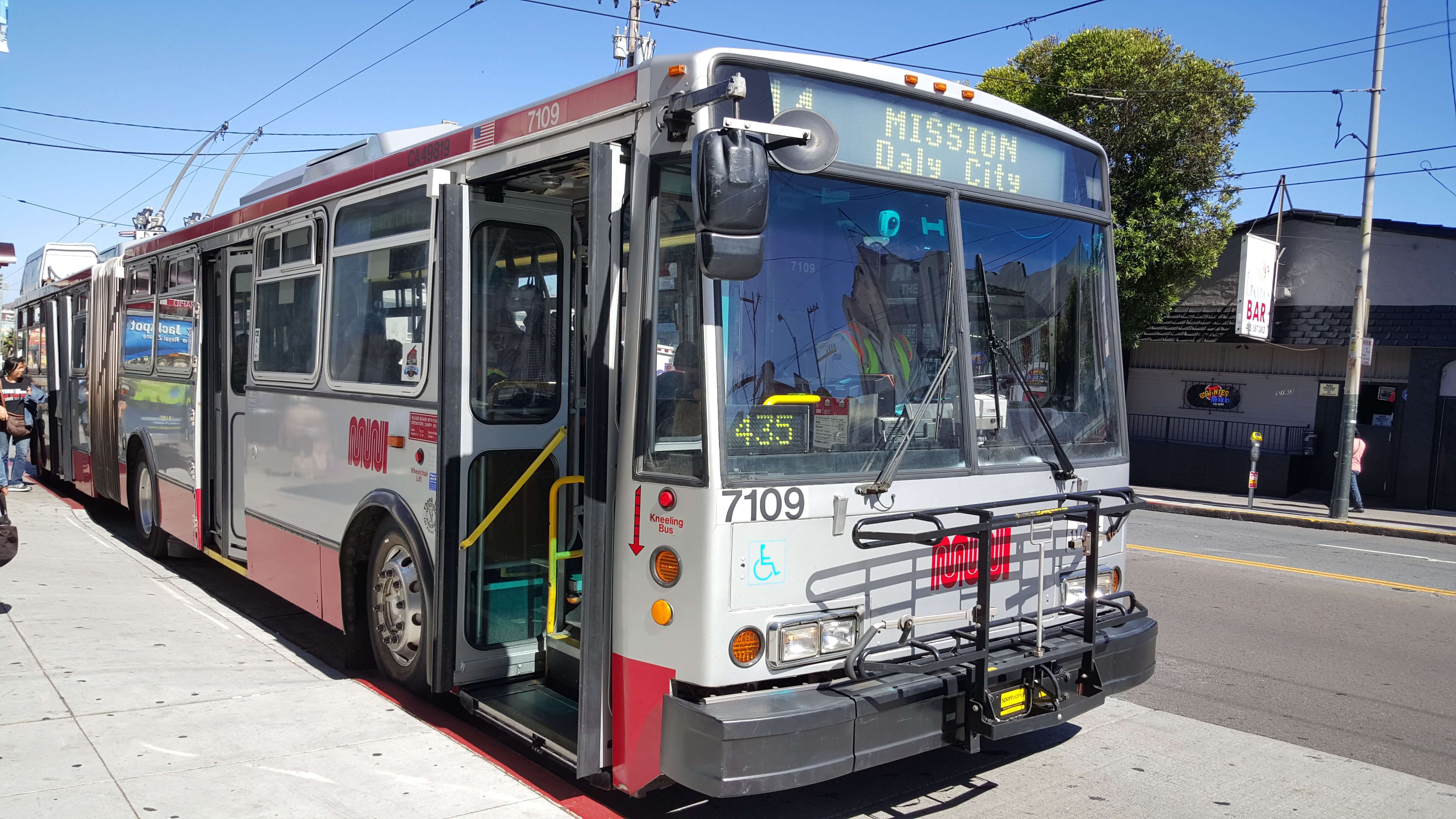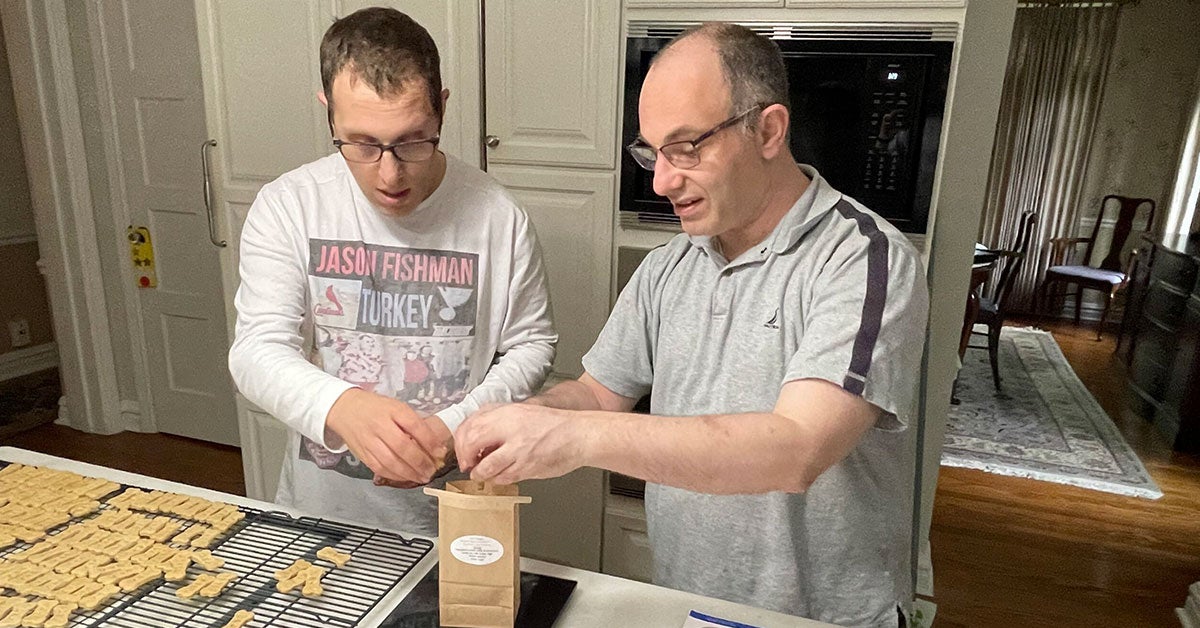Learning to ride a public bus independently is a skill that many children with Fragile X syndrome will be able to learn. Many of them have ridden a school bus and some of the skills are transferrable.
If your child has ridden a school bus, here’s some of what they may already have experienced:
- The stop was near your house.
- The bus was usually on time except in poor weather.
- When the bus was going to be late, the school district would often call to let you know.
- Your child got to know the bus driver and other students on the bus.
- Someone from the school district may have ridden on the bus with your child.
If your child has not ridden a school bus yet, you may want to consider the following (you may want to do this even if your child has ridden a bus):
- Follow public buses around town to see where they go.
- Take your child to the central bus station and watch the public buses come and go.
- Go for a bus ride to some destination in your town.
- Use opportunities to discuss the differences between school and public buses.
Tip: Create as many visuals as your child needs to help make this process successful.
Public Buses — What to Consider
A few things you’ll want to look out for, and plan ahead accordingly:
- The bus driver may not be the same every day — even if the bus is taken at the same time.
- The bus driver may not be particularly friendly. Most are of course, but you can’t count on it.
- The bus could run late. Unlike the school bus, no one will contact you to let you know, so it’s important to be prepared, especially in bad weather.
- You have to pay to ride the bus each time you ride, though you may decide to use a bus pass. See the planning section below for ideas on this.
- The bus waits for no one. In most cases, if you miss a bus another one will come along — eventually. Be prepared for a wait.
- There are rules on public buses: No food, drinks, or loud music.
- The public bus will be much quieter. Many of the people on the bus will be going to work, so it is a much more serious environment.
- There will be “strangers” on the bus. Most likely, everyone else on the bus will be a stranger to your child, at least initially.
- As with the bus driver, some of the passengers will be friendly, others will not. Saying hi or good morning could be the extent of communication with them. There is a chance that no one on the bus will say anything in response.
- Your child will have to signal to the driver when they want to get off, by using whatever method is on the bus — usually pulling a cord or pushing a button. Otherwise the driver will not stop.
You may want to impose additional rules to prepare for various scenarios. For example, if you think talking on a cell phone (non-emergency) or listening to music would cause your child to not pay attention, you may want to wait to allow them until they have more experience. Of course, you want to tell your child that the cell phone can always be used in case of an emergency.
Planning Your Bus Trip
Once you have reviewed the differences between a school bus and a public bus, it’s time to plan the trip. Here we focus on learning to take the bus to work, but you can use any destination you think is appropriate, for example, the recreation center or a favorite restaurant.
Work on the Details Together
Look at the bus routes and schedules together with your child and determine the best route. Discuss it and write important information on an index card (or other thick paper) to keep in their pocket. Note things like the bus number, times, or what the bus will say on the front display (if any). You might also consider laminating the cards, if the information won’t change very often.
Tip: Print and give destination cards to the bus driver.
The Importance of a Charged Phone
Your child should always let you know when they’re leaving the house. When they do, make it a rule that they are to always take their charged cell phone with them every time they go somewhere, especially if going alone.
Tell them:
- If you get hurt, sick, or become afraid for any reason, call me or 911 if it’s more serious (and discuss what more serious means, including non-scary examples).
- You need to always call and tell me if your plans change — in any way — so no one worries about them.
On their phone, make sure their main contact is No. 1 on their speed dial, and their ICE (in case of emergency) information set up (see below). They should also have some form of government-issued ID on them, along with emergency contact information. And if they have a medical condition or allergies, they should wear a necklace or bracelet for emergency responders.
How to Set Up ICE on Your Phone: Fortunately, most of today’s smartphones come with a feature that allows you to enter ICE data that’s accessible from your phone’s lock screen, including emergency contacts and important medical information. Smart Phone Feature: In Case of Emergency (ICE)
Paying Fare
Figure out a method of payment to be used each time. Are they going to use money or a bus pass? Whichever you choose, it has to be ready when they get on the bus. This might mean they have to keep a lot of change on hand or keep track of where the bus pass is. Here’s a few strategies you might try:
- Have them keep the pass in their billfold or put it on a neck lanyard; and put it in the same place every time at both work and home.
- If they pay daily, they should keep a bag of quarters at home and use a wallet or coin purse to hold the exact amount for each day. It should be prepared the night before as part of their night-time ritual.
Crowded Buses
The bus could get crowded and people could bump into your child, which could be very irritating to your child. You may want to practice their response if something like this happens. For example, your child could put a backpack or a jacket next to them on the seat, being careful not to keep anyone from using the seat.
You may also want to teach them some deep breathing exercises, in case a situation like this cannot be avoided.
Talking to the Bus Driver
Your child may need to practice what to say to the bus driver. Set up chairs at home to serve as the bus, have someone role-play the driver, and your child can practice what they’d say in different situations. For example, Is this bus going to Central Avenue?”
Missing a Stop
What if they miss their stop? Most likely, they’ll be able to get off at the next stop and either walk a little further or take a return bus back to their regular stop. You may want to practice this on one of your bus trips together
Safety Rules
Review safety rules with your child before they get on the bus, which should include:
- Do not give out personal information, including your last name, address, or phone number.
- Have them practice what to say when they get on the bus, with the idea that the bus driver might help alert them: I am going to work. I have to get off at the Taco Bell.
- Teach your child to talk to the bus driver if there is a problem.
A 5-Step Method to Teach Your Child
We recommend this method for preparing your child for all kinds of new activities, with actual bus rides (or walks, or plane rides, etc.) and a slow transition to being on their own. Also see the short video at the end of this list.
If not you, determine who will ride with your child on the bus. Start with one person as the helper.
1. Planning and Safety
Review the information above on the differences between a school bus and a public bus, and the planning and safety sections.
2. Ride the Bus
In this phase, you or a helper will stay at your child’s side and show them all the steps of riding the bus. You’ve already gone over safety and how to handle different situations. Here you’ll introduce how to be be a responsible bus passenger.
- Before they get on the bus, make sure they’ve taken care of their hygiene, are nicely dressed, and they have their bus notes, exact fare (or bus pass), and cell phone.
- Standing with them at the bus stop, point to the sign that shows which bus stops at this location.
- When you both agree this is the bus you want, step up by the sign so the driver knows you want to get on. You may wave to the bus, too.
- Model saying good morning to the bus driver and put your money in the box. Your child may add, “Hi, I am going to work. I have to get off by the Taco Bell.”
- Help them pick the seat best for them. Suggest they sit close to the driver.
- Talk to them about appropriate manners while they’re on the bus.
- Show them the bell they will need to ring when they want the bus to stop. It’s also good to find and point out a landmark to watch for near their stop.
- Have them join you in saying thanks to the driver when getting off the bus. The only caution here is that some buses stop on a sidewalk that can be very busy with pedestrians or bikes or both. Always look both ways when getting off the bus!
3. Helper Fades Support
You may start at their side and not say anything, then adjust further by sitting right behind them. As your child becomes more confident, you can become just another person on the bus. This may take a couple of bus trips or it could take quite a few — it just depends on how your child does.
As you begin to fade your assistance, it’s important to allow them to figure things out on their own and even make mistakes. You should not jump right in and fix things quickly, unless they’re in danger. Allowing this kind of problem-solving will help them reach independence goal.
A good example of this would be if your child forgets to ring the bell at their stop. You may want to intervene only if a couple of stops have passed and it looks as if they don’t intend to ring the bell.
4. Follow Them by Car
Just like it sounds, your child will ride the bus independently and you will follow behind by car.
5. Ride the Bus Alone — In Touch by Phone
Finally, your child will travel independently but will always call you when they’re leaving and after they arrive at their destination.
WATCH — Transportation: Riding a Bus Independently
Success!
Different people will have to spend varying amounts of time in each phase. Let them take the lead on when they’re ready to move on. Likewise, you may be able to skip some phases.
Encourage them each step of the way with a reward. Coming up with a reward or incentive system may be a crucial component of successful bus training.
Use visuals as much as you think your child needs. Taking photographs and creating your own story might be fun for your child to show others what they are now doing on their own.
Being able to ride a bus independently is a great accomplishment. It opens up a world of opportunity for your child. They’ll probably want to take the bus home from work, or try to take the bus to different places like the recreation center, a movie, or even a restaurant. The possibilities are endless. For each new location, your child may require additional training using a similar process, though with experience they may not take as long to achieve mastery.
Congratulations! You did it!





